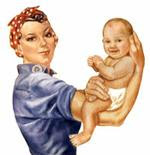Check out another article below from Forbes listing the best and worst cities to be in the job hunt in. For most of us in the OKC Metro, we already know that this market is challenging for businesses and recruiters looking to hire. For the job seeker, living in Milwaukee and OKC, it couldn't be better.
****************************************
Cities Where Getting a Job is Easier and Harder
By Lauren Sherman of www.forbes.com
For many Americans, finding a job is becoming increasingly difficult.
In the past year, unemployment rates have increased in nearly all of the country's 49 largest cities (metros with populations of 1 million and over.) Unemployment rates were higher in June than a year earlier in 332 of 369 metropolitan areas, lower in 27 areas and unchanged in 10 areas, according to the U.S. Bureau of Labor Statistics, which Wednesday released non-seasonally-adjusted regional numbers for June.
The overall unemployment rate in the U.S. increased 1% from 4.7% in June 2007 to 5.7% in June 2008.
"The economy stopped creating jobs in September of 2007, and it has been losing jobs since December," says Dean Baker, PhD, an economist and co-director for the Center for Economic and Policy Research based in Washington, D.C. "We need to create 120,000 jobs per month to keep up with the labor market. Instead, we've been losing 60,000 per month."
In the depressed city of Providence, R.I., the number of unemployed workers aged 16 and over jumped from 4.9% in June 2007 to 7.3% in June 2008. That's a 2.4% increase: the largest in the country. The retail industry here has been hit particularly hard. Since 2005, the number of retail jobs in the city has decreased by 5%, says the BLS. And according to a study released in June 2008 by the Cambridge, Mass.-based Joint Center for Housing Research at Harvard University, one in 41 Rhode Island mortgages were in foreclosure at the end of 2007.
Riverside, Calif., didn't fare much better. This Southern Californian city's unemployment rate rose 2.1%--from 5.9% in June 2007--to 8% in June 2008. Along with other large chunks of the state, the area suffered from a loss of jobs in the construction industry. What's more, thousands of undocumented workers were also laid off, but those numbers don't show in the statistics since the jobs were never registered. That means the percentage in Riverside is probably significantly higher than reported.
And in Memphis, Tenn., unemployment rates increased 2%--from 5.3% in June 2007--to 7.3% in June 2008. FedEx--one of the area's largest companies--has suffered from the slowing growth in gross domestic product (which has cut into shipping volumes) and the high price of oil.
However, in some areas, jobs are being added.
Two Midwestern cities--Oklahoma City and Milwaukee--saw unemployment rates inch lower. In the former, rates dropped to 4.2% in June 2008 .4% from 4.6% in June 2007. The latter slipped just .2%, to 5.3% in June 2008 from 5.5% in June 2007. Oklahoma City has benefited from the increase in demand for oil and gas, while Milwaukee has remained well thanks to its health care system, which employs over 140,000 people, according to the BLS.
While these decreases may seem insignificant, it means these cities are inching closer to the natural rate of unemployment of 4%.
Too low of an unemployment rate can result in labor shortages, which is just as bad for an economy as a surplus in labor.
skip to main |
skip to sidebar

Preparation is Key

Black or Grey Suit is Best

tips and tricks for those on the job hunt. how to get noticed!! learn the unwritten rules of the job search from a professional recruiter and networker.
Research Dresscode Prior to Interview

Preparation is Key
Keyword Search ME!
Classic Interview Attire

Black or Grey Suit is Best
My Upcoming Events. . .
Twitter Updates
About Me

- Jessica
- I am currently recruiting for professional positions in the Oklahoma City Metro.


